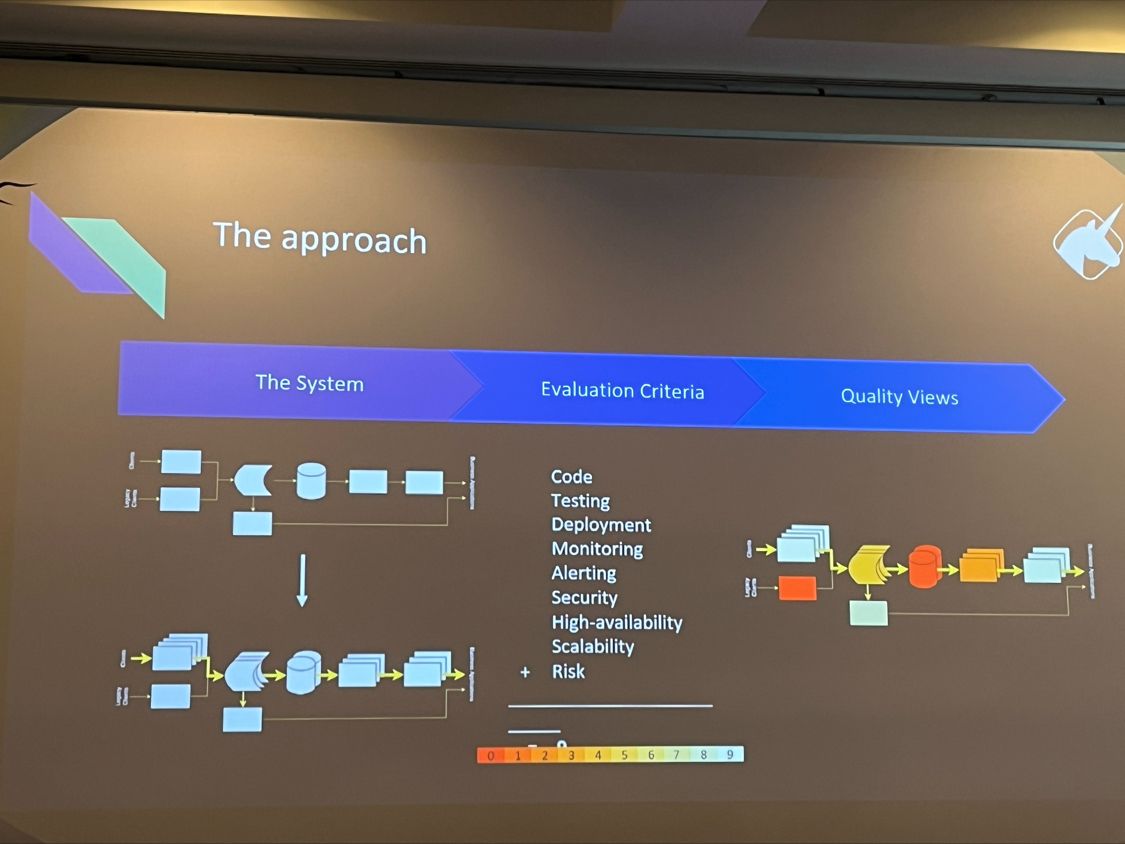Quality is complex. Quality is subjective. Even if we all talk about the same system and have the same professional background, our assessment of a system’s quality might wildly differ. So, when I got the request to detect the quality gaps among multiple teams, I knew I needed a uniform way to scan and assess in order to provide this information.
This is when I discovered Colin Breck’s Quality Views. What initially was meant to only help me detect the next focus area as a test engineer, turned out to be a powerful tool that helped the teams and our management to create a common understanding of our systems and their quality. Quality Views help us balance the effort put in delivering new functionality to customers with the effort needed to improve & maintain the quality of our systems.
Company through a transformation to product lead -> one product!
4 teams - 12 services 1 monolith 2 testers
Working really hard on shifting left But also shifting right using metrics, monitoring, …
Define quality
You need to know what quality means for your org
Uniformly assess and effectively communicate the current state of the system to allow us to make the right investments and enable us to track its evolution.
uniformly assess over 4 teams and 12 services
Quality Views by Colin Breck
Using Quality Views to Tackle Tech Debt @Tesla
The approach
visualise the system
score every part of the system over different evaluation criteria -> heat map

more details on Collin’s blog
Preparation
determine evaluation criteria
- code
- tests
- deployment
- monitoring
- alerting
- security
- SLA
- business risk
-
- Risk Mangement = 9
binary evaluation of each criteria => sum up to a score on 9
define clarifying questions, ex: is monitoring available so someone can troubleshoot and operate the component
…
pick a first team
Round no 1
drawing the system can be challenging
what classifies a component
Evaluation criteria
- binary is hard: zero or one is harsh
- some questions are too long, too vague or irrelevant
Quality Views
=> engineering and business are aligned, aha moments
generates actionable actions: what do we want to tackle in the coming months
Learnings
functional components vs technical implementation
Clarified the way a criteria gets a 1 or a zero: min(q1:q2)
=> holistic view of the whole system
=> one way to assess the system
Because we kept the functional component more important than the technical implementation => clarified the desired architecture
Discovered some teams/services lacked functional metrics
Round no 2
Updated the system diagram
Only rescored the components that were touched coz action points were defined
Final notes
If you think that would help, just do it!
Initial criteria list require to define quality
It is a whole team approach
- the team discussions while scoring are really valuable